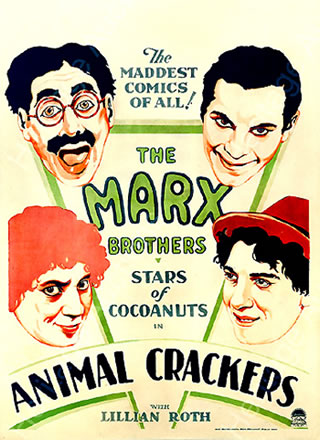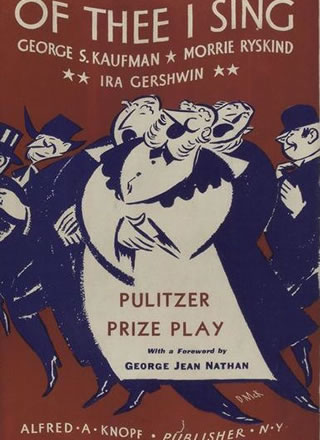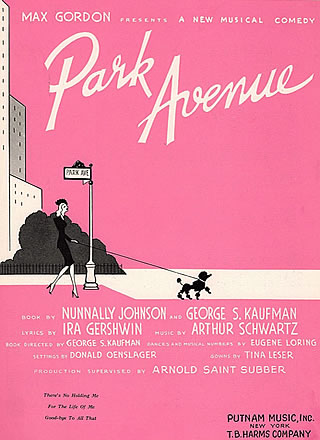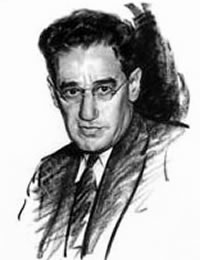The Royal Family
(1927)
By George S. Kaufman And Morrie Ryskind
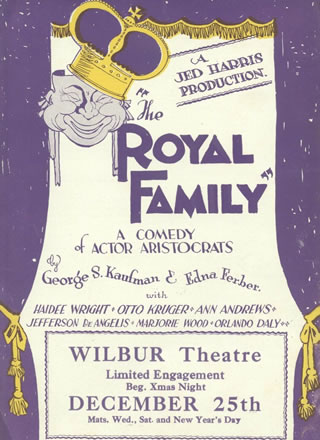
Cast size: 10 men, 5 women (some doubling possible). One set.
The spotlight shines on the most famous theatrical family on Broadway: the fabulous Cavendish clan, which has defined unforgettable stage acting for over three generations. A bittersweet bouquet to the glory of the Great White Way, The Royal Family portrays the off-stage melodrama of what it means to have greasepaint in your veins.
For performance rights, contact: Concord Theatricals

Table of Contents
The Plot
The curtain goes up on the most famous theatrical family on Broadway: the fabulous Cavendish clan, which has defined unforgettable stage acting for over three generations. A bittersweet bouquet to the glory of the Great White Way, The Royal Family portrays the off-stage melodrama of what it means to have greasepaint in your veins. While matriarch Fanny Cavendish plans a farewell tour, her leading lady daughter, Julie, has to choose between a dinner date and a first rehearsal–and just when matinee idol brother Tony is on the lam for slugging a Hollywood director.
In the meantime, Fanny’s granddaughter, Gwen, is thinking the unthinkable—chucking the whole thing to marry a stockbroker.
“Marriage isn’t a career—it’s an incident,”
sniffs Fanny. But, the show must go on—and so must the Cavendish tradition, and, when the curtain falls, the torch is passed from one generation of actors to another.
About the Play
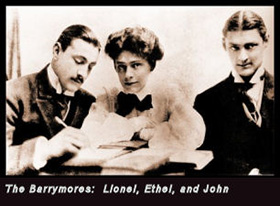 For their second stage project, Kaufman and Ferber became intrigued with the idea of a household that ran amok with eccentric types, but they couldn’t quite agree on a promising cast of characters. Perhaps Ferber thought back to her halcyon days working with Ethel Barrymore on an earlier play–at any rate, the eccentric family became the Cavendish clan, a dynasty of acting giants. Kaufman and Ferber worked assiduously during the months of 1926 on their new project. Ferber rented a midtown hotel suite as an office and when a hotel clerk noticed that Kaufman had entered at noon and not left by one AM, he telephoned Ferber.
For their second stage project, Kaufman and Ferber became intrigued with the idea of a household that ran amok with eccentric types, but they couldn’t quite agree on a promising cast of characters. Perhaps Ferber thought back to her halcyon days working with Ethel Barrymore on an earlier play–at any rate, the eccentric family became the Cavendish clan, a dynasty of acting giants. Kaufman and Ferber worked assiduously during the months of 1926 on their new project. Ferber rented a midtown hotel suite as an office and when a hotel clerk noticed that Kaufman had entered at noon and not left by one AM, he telephoned Ferber.
“I’ve got to ask you this, Miss Ferber, is there a gentleman in your suite?” “Wait a minute,” Ferber responded, “I’ll ask him.”
She returned to the phone: “He says he certainly is a gentleman” and she hung up. The hard work paid off; the final play was accepted by producer Jed Harris on the basis of the first act alone. For Ferber, the rehearsal process was an embarrassment of riches. She had optioned her epic novel, Show Boat, to producer Florenz Ziegfeld, who was making a musical–of all things–out of it with Oscar Hammerstein II and Jerome Kern and it was in rehearsal in New York at exactly the same time.
Ferber was alternately thrilled and terrified that her complex piece was being musicalized; likewise, Kaufman, the eternal pessimist, was sure The Royal Family would fail miserably. Neither of them need worried: Show Boat opened on December 27, 1927 and became the first great classic musical in American history and The Royal Family opened the very next night.

It was an actor’s theater because, on the one hand, no one took the drama seriously and, on the other hand, some very interesting actors with broad styles and vivid personalities dominated the stage. Plays were not inquiries into the nature of life or the discussion of ideas but vehicles designed to present the stars triumphantly.
Stage History
The Royal Family opened at the Selwyn Theater on December 28, 1927 and went on to run 343 performances. When The Royal Family made its West End debut in 1930, the show underwent a title change. So as to avoid any confusion with the real Royal Family, the play was called Theatre Royal. Another footnote to theatrical history is that this production was directed by Noel Coward and starred the young Laurence Olivier as the swashbuckling Tony Cavendish. However, the play never got a production–including the 1932 film version, The Royal Family of Broadway (with an over-the-top Frederic March aping John Barrymore)–in which all three leads were exceptional until the 1975 revival with Rosemary Harris, George Grizzard and the unforgettable Eva Le Gallienne.
This version began in Washington as part of the Kennedy Center‘s Bicentennial series of classic American plays. Directed by Ellis Rabb, it was the first major revival of the play. Its success was particularly gratifying for Le Gallienne who had been one of the leading actresses–and artistic directors–in the American theater of the 1920s and 30s. She was brought out of retirement because, in the words of director Rabb, she brought the “emotional baggage of the piece onstage” with her first entrance as Fanny. It has subsequently been revived by regional theaters across America and, in 2002, received its first British revival (under its original title) on the West End, starring Dame Judi Dench, Toby Stephens, and Harriet Walter.
Other Plays in the Catalogue
Book by George S. Kaufman and Morrie Ryskind. Music by George Gershwin. Lyrics by Ira Gershwin. Cast size: 22 men, 17 women; doubling possible. Of Thee I Sing opened at the Music Box Theatre on December 26, 1931 and ran for 441 performances.
An unusual and sophisticated show, written by some of the finest talents of the musical theater, with material far ahead of its time. Park Avenue is a small-scale farce involving the dangers of apparent serial monogamy among New York's upper classes.
A farce about the small-town mania for joining fraternal organizations. Our hero, Jim Helton, nearly bankrupts his entire family savings in order to host the national convention for his beloved Knights of Corsica. Common sense prevails at the very last minute.
Table of Contents
Contact Us Today
Interested in bringing George S. Kaufman’s timeless plays to your stage?
Please refer to the contact information for each specific play on the various collection pages for direct amateur and professional licensing information.
Plays are represented by Concord Theatricals, Broadway Dramatic Licensing, and Music Theatre International respectively
If you are interested in first-class performance or film/television rights:
In the US, George S. Kaufman’s plays are represented by:
CPK Artists, LLC
In the UK, George S. Kaufman’s plays are represented by:
Alan Brodie Representation
For more information about George S. Kaufman or this website, contact:
Laurence Maslon
Literary Trustee, George S. Kaufman Estate

